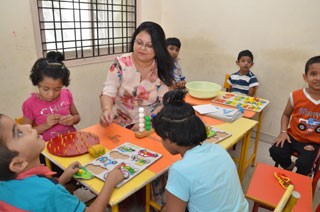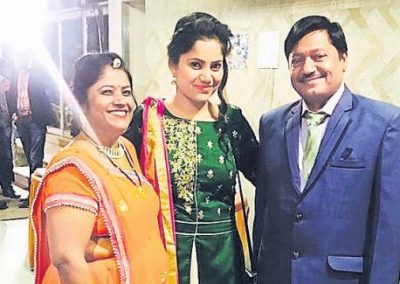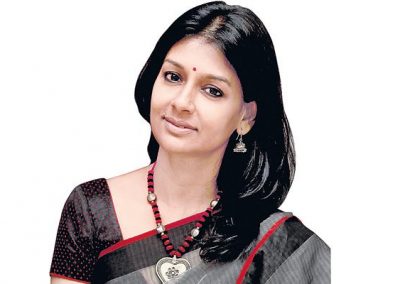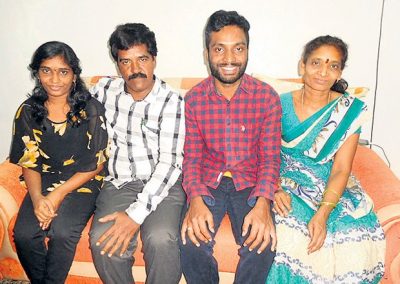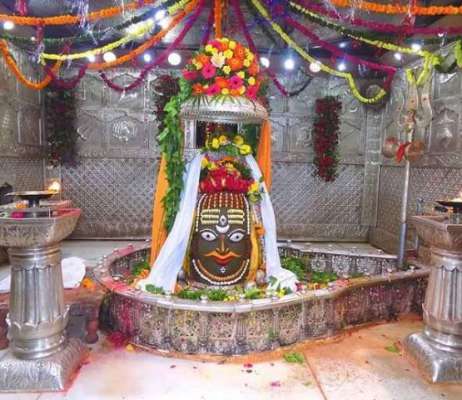Located near the Rudra Sagar Lake in the south, in Ujjain, Madhya Pradesh, this ancient temple has three storeys, dedicated to the Lords Mahakaleshwara, Omkareshwara and Nagachandeshwara. The sacred lingams of the two Gods along with the jyotirlingam of Mahakala are placed inside the temple. Upon entering the temple, one also sees the pious Kunda called ‘Koti Tirtha,’ which is constructed in the sarvatobhadra architectural-style. Near the most prominent Jyotirlingam, one can also catch a holy glimpse of the idols of Lord Ganesha, Kartikeya and Goddess Parvati – Lord Shiva’s family in the Garbhagraha. The main lamp, the ‘Nanda Deepa’ is eternally glowing in this magnificent shrine.
There’s no confirmation on when exactly the temple was constructed. However, as per the Puranas, it’s believed to have been built by Prajapita Brahma. In the olden times, the temple is believed to have been colossal and erected on massive wooden pillars. It did not have shikharas before the Gupta period. Then during the Paramara period, the temple that had seen crises from time to time was rebuilt, in the Bhumija architectural vein. Finally, during the 18th century A.D., the General Srimant Peshwa Baji Rao I and his loyal comrade Srimant Raanojirao Shinde Maharaj invested heavily in the renovation and revamp of the holy temple that stands proud in Ujjain today.
The temple, one of the most-celebrated temples in India, is famous for the sacred presence of ‘jyotirlingam,’ one of the 12, across India. A jyotirlingam has a colossal importance for all Shiva devotees, as it’s a manifestation of the Lord himself. The temple is also said to be one of the ‘Shakti-Peethas,’ believed to be an incarnation of the power of the Goddess Sati Devi.
Mahashivaratri
This special Lord Shiva’s day is celebrated jubilantly at the temple by all his devotees, a special fair is organized near the temple. Also, a procession of Lord Shiva and his consort is carried by his loyal devotees with great cheer and zeal, commemorating the holy marriage of the God-pair, Shiva and Parvati.
Harihara Milana
The festival is celebrated on ‘Baikuntha Chaturdasi’ and marks the meeting of the two great lords, the Mahakala and Dwarkadhisha. A special procession dedicated to both the Lords is carried out on this day in order to please them.
Nitya Yatra
Observed in the Avanti Khanda of the Skanda Purana, this festival is celebrated with solemn devotion by devotees which involves ablutions in the pious Sipra followed by visits to Mahakala and all other deities in the temple.
Sawari (Religious Procession)
A sacred procession of the idol of the Lord Mahakala is taken around the streets of the city with great joy and vigour.
Morning Pooja
It is performed from 7 to 7.30 a.m. (Between Chaitra and Ashwin) and from 8 to 8.30 a.m. (Between Kartik and Falgun) – this is to greet the Gods with sincere prayers in the morning.
The Mid -day Pooja
It takes place from 10 to 10.30 a.m. (Between Chaitra and Ashwin) and from 10.30 to 11 a.m. (Between Kartik and Falgun)
The Evening Pooja
It is conducted from 5 to 6 p.m. (Between Chaitra and Ashwin) and from 5.30 to 6.30 p.m. (Between Kartik and Falgun)
Aarti Shree Mahakala
It occurs from 7 to 7.30 p.m. (Between Chaitra and Ashwin) and from 7.30 to 8 p.m. (Between Kartik and Falgun)- the important evening prayer before the God.
Bhasma Aarti
It holds a great significance at the temple. During this special aarti no devotees are allowed inside. The main priests conduct this special Pooja for which devotees have to register in advance. Only after the aarti is performed, can the allowed devotees enter for Jalabhishek.



